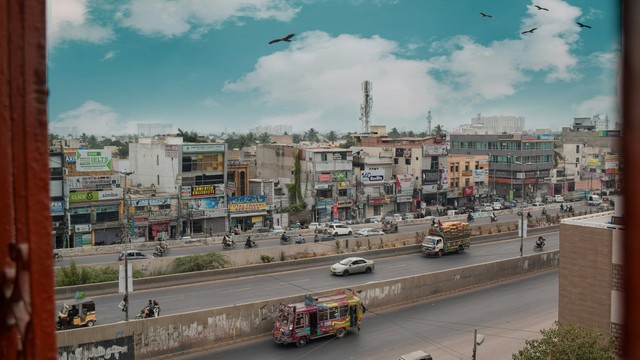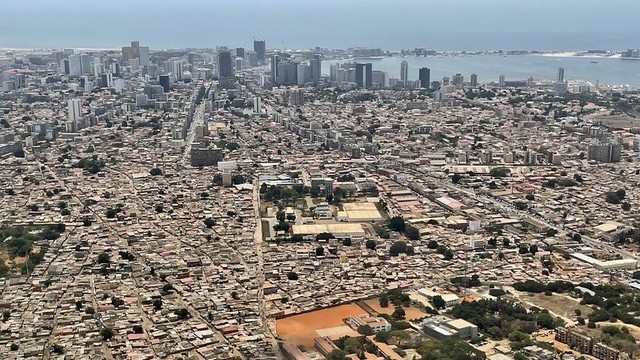Simplified sewerage systems: lessons from Dar es Salaam
Recent research conducted with residents of an informal settlement demonstrates how a low-cost solution to pressing sanitation issues can transform lives – and importantly could transform other communities as well.


Informal settlement in Mji Mpya, Tanzania (Photo: copyright Christopher Yap)
In 2020, 38% of the global urban population lacked access to safely-managed sanitation. By 2050, urban areas are expected to grow by another two billion people, placing huge demands on already struggling water supply and waste systems.
In sub-Saharan Africa, those lacking access are disproportionately concentrated in rapidly growing informal settlements. Lack of access to safely-managed sanitation has severe impacts on the health and wellbeing of urban residents and poses environmental risks.
Even before COVID-19, 89 countries were not on track to achieve the Sustainable Development Goal of providing universal basic sanitation by 2030. The scale of the challenge demands greater understanding of the potential and limitations of innovative approaches to urban sanitation provision.
What are the opportunities and constraints, and the strengths and limitations, of different sanitation models and systems? And under what conditions is one intervention preferable to another?
An affordable solution?
Simplified sewerage systems (SSSs) have been lauded as an affordable way to provide good quality urban sanitation. These systems use smaller diameter pipes, laid at a shallower depth and with a flatter gradient than conventional sewers, which means lower costs and more flexibility in design. And household toilets are usually part of the installation.
SSSs have been successfully implemented in Brazil and Pakistan, with significant impacts on the health outcomes of connected households, as well as lower costs.
In Dar es Salaam, Tanzania, local NGO Centre for Community Initiatives (CCI) led the development of an SSS in the informal settlement of Mji Mpya. Through a household survey and focus groups, we assessed the impacts on the lives of residents in the settlement.
The 70% of Dar es Salaam’s population who live in informal settlements lack reliable access to services – including sanitation. The formal sewerage network serves only 10% of residents. And 80% of what sanitation exists comprises pit latrines, which are expensive to maintain and liable to overflow during the two rainy seasons.
Case study from Mji Mpya
Mji Mpya, an informal settlement located close to the city centre with a population of approximately 17,000, has a sloped terrain that makes it well suited to an SSS.
Most residents used pit latrines – simple pits dug between buildings covered with a piece of wood with some very basic covering for privacy. Residents described a wide range of challenges associated with their condition, conflicts around waste disposal and the high cost of maintenance. And access could be hazardous, particularly for elderly or disabled residents – and of course for children.
Eighty per cent of survey respondents fall below the World Bank’s poverty line of US$3.80 per day or 268,000 Tanzanian shillings (TZSs) per month. The cost of emptying and maintaining pit latrines – 70,000 to 120,000 TZS ($30.19 to $51.75) four or five times per year – could take a substantial proportion of this.
Mji Mpya’s new sewerage system was developed through CCI’s engagement in an international research programme, SHARE, and currently comprises nine ‘routes’ through the settlement, connecting 300 houses.
Real impacts on people’s lives
Residents reported a wide range of positive social and economic impacts related to the SSS. Connected households pay a monthly tariff of 5,465.75 TZS ($2.36) plus VAT per sewer connection, in addition to increased purchases of water necessary for the SSS to function. Some residents also took out loans to install a flush toilet.
Overall, however, total costs are significantly lower than those associated with pit latrines. For example, one tenant explained that monthly payments for emptying the pits had been up to 10,000 TZS ($4.31), while their monthly contribution towards the tariff was now 1,500 TZS ($0.65).
Despite the vast majority of residents reporting reduced costs, savings were unevenly distributed within the community, depending on factors such as tenure status, formal and informal agreements between landlords and tenants, and number of dependents. The reduced sanitation costs remain too high for the lowest-income residents.
Residents also reported positive social impacts at both household and settlement level. The SSS has helped reduce conflicts between neighbours regarding the disposal of waste and has significantly improved the urban living environment.
At the household level, the SSS has reduced anxiety regarding the condition and accessibility of toilets and ease of waste disposal.
Some challenges remain
However, residents also reported ongoing challenges around maintenance. For example, pipes can become blocked when households don’t use sufficient water with the system. Residents are responsible for fixing small blockages, while larger maintenance issues are the responsibility of the city utility company DAWASA. However, the precise boundary between these responsibilities is not well defined.
They also reported a lack of clarity about who to contact when maintenance challenges arose. And there were concerns about coordination between residents in different parts of the settlement, given that the SSS connects uphill and downhill residents across a large area.
These challenges notwithstanding, the research revealed several factors that have enabled the SSS to have significant positive social and environmental impacts. These include a well-organised community with ownership of the system, the longstanding relationship between residents and CCI, and the topography of the settlement. This suggests that the approach taken in Mji Mpya would need to be carefully reworked in other locations rather than replicated.
Our work suggests that it is important to understand an SSS as both a social and a technical system. It is one that depends as much on ongoing management, maintenance and governance arrangements, as it does on the installation of toilets and pipes.
Meeting the urban sanitation challenge
The experience in Mji Mpya shows how partnerships between NGOs, residents and local state actors can successfully deliver SSSs that provide affordable, safe sanitation to some of the poorest urban residents in mixed-tenure informal settlements.
But it is important not to overstate their potential. Access to safe sanitation is a necessary but insufficient condition of urban poverty reduction.
We believe there are three key prerequisites to realising the full potential of SSSs in Dar es Salaam:
- A need to defend and grow community-level governance structures as the systems expand to more areas, and to be open to adaptation through time
- Greater awareness of the value of community-led sanitation solutions to wider institutions in the city – not least to local government and utility companies, and
- To better understand the role of SSSs in relation to the patchwork of solutions and interventions that are going to be required to provide safe sanitation for all urban residents.
While there is more work to be done, CCI and the residents of Mji Mpya are demonstrating how an SSS can make a significant contribution towards meeting the global goal of sanitation for all, particularly in rapidly changing informal urban contexts.
With thanks to Colin McFarlane, Tim Ndezi and Festo Dominic Makoba for their contributions to this blog.
This blog draws on a recent article in the journal Environment & Urbanization: ‘Sanitation challenges in Dar es Salaam: the potential of simplified sewerage systems’



